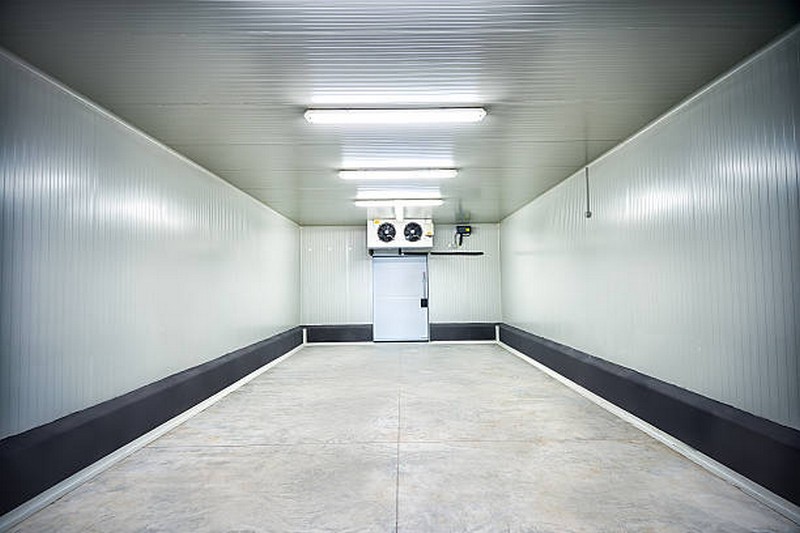In today’s fast-paced and varied market, a one-size-fits-all strategy seldom works—especially when it comes to cold storage solutions. The assembly cool room system emerges as a shining example of customisation, providing exceptional flexibility to satisfy the individual demands of numerous industries. From the delicate balance necessary for medicines to the high needs of the food service sector, personalizing your assembly cold room may greatly improve operating efficiency, product purity, and, ultimately, the bottom line. This article looks into the art and science of modifying assembly cold rooms to ensure they meet industry-specific standards.
The Basis of Customization
Understanding your industry’s specific needs is the first step in customizing assembly cool rooms. This includes not just temperature management, but other factors like as humidity levels, air quality, and regulatory compliance needs. Assembly cold rooms’ modular design offers the ideal canvas for such customisation, allowing for combinations that are specifically tailored to the demands of your goods and operations.
Key Areas of Customization
- Temperature and Humidity Control: Different products require different storage conditions. Fine-tuning the temperature and humidity controls to meet these requirements ensures the preservation of product quality and extends shelf life. Advanced HVAC systems and smart controls can maintain precise conditions, adapting to changes in load and external temperatures.
- Layout and Scalability: The physical layout of a cold room significantly impacts operational efficiency. Customizing the layout to optimize workflow, from receiving to storage and shipping, can reduce labor costs and minimize handling time. Moreover, scalability allows businesses to expand their cold storage capacity as they grow, without the need for complete redesigns.
- Insulation and Energy Efficiency: Tailoring insulation materials and thickness can greatly affect energy consumption. Customizing these elements based on the cold room’s location and the external climate can lead to substantial energy savings. Additionally, incorporating energy-efficient lighting and refrigeration systems further reduces operational costs.
- Safety and Accessibility: Customizing cold rooms with safety and accessibility in mind is crucial. This includes ergonomic design features that prevent strain and injury, adequate lighting for visibility, and safety measures like emergency exits and anti-slip flooring. For industries with stringent regulatory requirements, such as pharmaceuticals, incorporating features that facilitate compliance is also key.
- Technology Integration: The integration of technology, such as IoT sensors for real-time monitoring and automated inventory management systems, can transform the functionality of a cold room. Customizing these technological solutions to fit industry-specific needs enhances product tracking, quality control, and predictive maintenance.
Industry-Specific Customization Examples
- Food and Beverage: Emphasis on hygiene and rapid product turnover. Customizations might include easy-to-clean surfaces, strategic layout for FIFO (First In, First Out) inventory management, and blast chillers for rapid cooling.
- Pharmaceuticals: Requires precise temperature control and security measures. Customizations could involve redundant cooling systems for temperature reliability, secure access controls, and conditions that meet Good Manufacturing Practice (GMP) standards.
- Floriculture: Sensitive to ethylene gas and humidity levels. Customizations might include ethylene scrubbers, humidity control systems, and gentle airflow to maintain flower quality.
- Research and Laboratory: Needs vary based on the type of specimens or chemicals stored. Customizations could include ultra-low temperature freezers, controlled atmosphere storage, and biosecure containment features.
The Process of Customization
The journey to a customized assembly cold room begins with a comprehensive needs assessment, considering both current requirements and future growth. Collaboration with a cold room specialist who understands the nuances of your industry is crucial. This partnership ensures that every aspect of the cold room, from the choice of refrigeration system to the layout and the inclusion of smart technologies, is aligned with your operational goals and industry standards.
The Benefits of Going Custom
The advantages of customizing your assembly cold room are manifold:
- Enhanced Product Integrity: By maintaining ideal storage conditions, customized cold rooms help preserve the quality and safety of products, reducing waste and enhancing customer satisfaction.
- Operational Efficiency: A layout and design tailored to your operations can streamline processes, reduce labor costs, and improve overall productivity.
- Regulatory Compliance: Custom features can ensure that your cold storage meets industry-specific regulations, avoiding potential fines and reputational damage.
- Scalability: A customized cold room designed with future expansion in mind can grow with your business, providing a long-term solution that adapts to changing demands.
- Cost Savings: Although the initial investment in a customized cold room might be higher, the long-term savings in energy efficiency, reduced product waste, and operational improvements can be substantial.
Customization is more than a luxury in the cold storage industry; it is a need for firms looking to retain a competitive advantage. Assembly cool rooms provide the flexibility and adaptability necessary to satisfy the specialized demands of many sectors, including food service, pharmaceuticals, and others. Businesses that invest in a bespoke assembly cold room may guarantee that their cold storage solution not only fits their present demands but also supports their future development and success. Finally, a custom assembly cold room is more than simply a storage area for goods; it is a strategic asset that may have a big influence on your company’s productivity, compliance, and bottom line.

